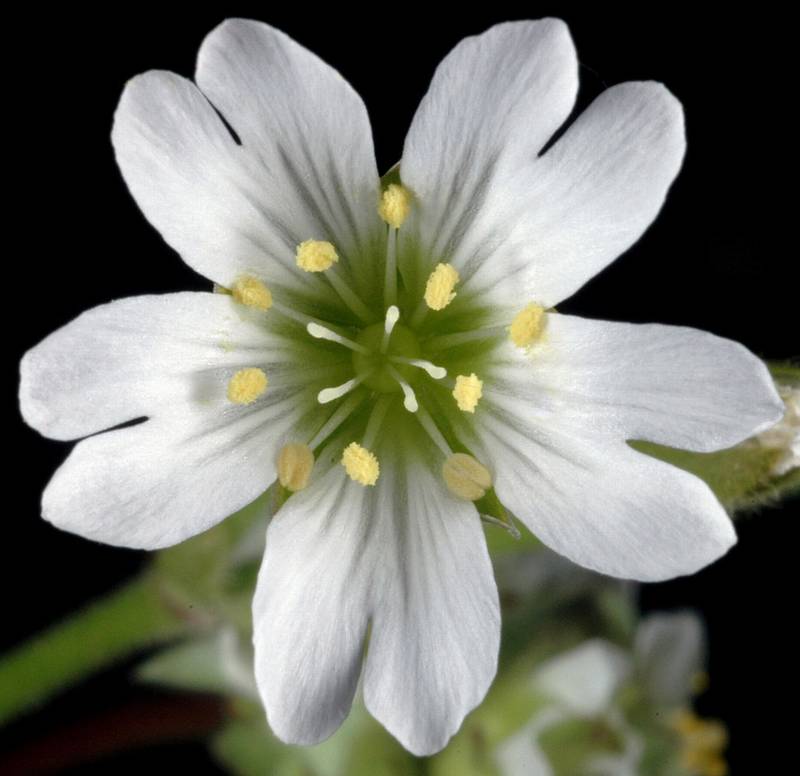Cerastium arvense
Cerastium brachypetalum
starry cerastium, field chickweed, field mouse-ear chickweed
gray mouse-ear chickweed
Leaves opposite, linear to narrowly lanceolate, 1-nerved, 1-3 cm. long;
cauline leaves often with bundles of secondary leaves in their axils.
Flowers 3 to 5 or more in an open inflorescence;
pedicels slender, erect, 1-3 cm. long;
sepals 5, 4-6 mm. long, with stalked glands;
petals 5, white, twice as long as the sepals, deeply bi-lobed-obcordate;
stamens 10;
styles 5.
Capsule membranous, cylindric, slightly curved, 1.5 times as long as the sepals, opening by 10 teeth.
Cerastium arvense
Cerastium brachypetalum
Occurring on both sides of the Cascades crest in Washington; Alaska to California, east across North America, except for the south-central and southeastern U.S., to the Atlantic Coast.
Occurring east of the Cascades crest in southeastern Washington and in the Columbia River Gorge; southern Washington to western Oregon; also occurring in eastern North America.



